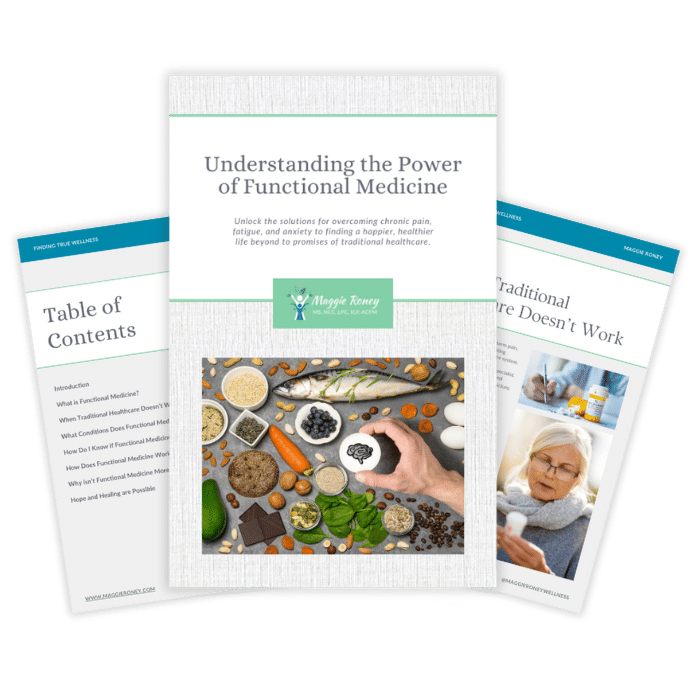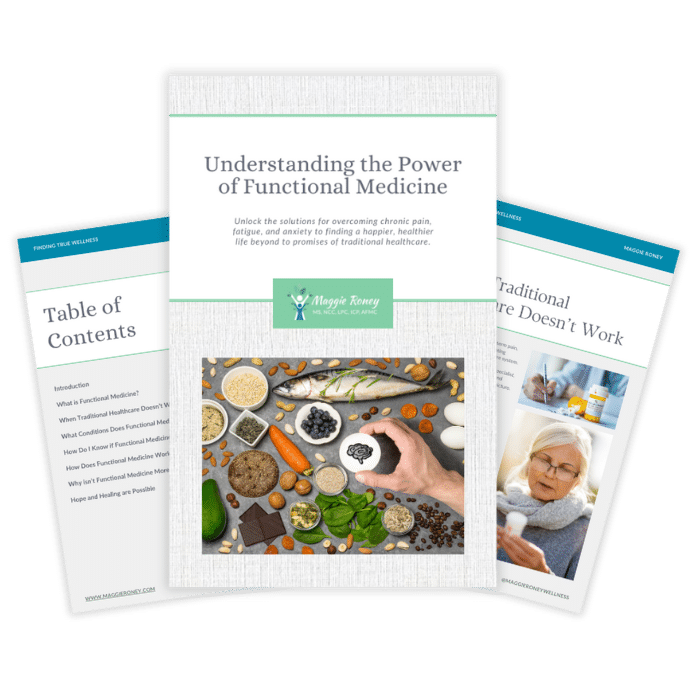The standard definition of healthy eating often centers on macronutrients — a plate divided into colorful fruits and vegetables, lean protein, and whole grains. But what if the secret to good health isn’t just what you eat, but where it comes from?
From a functional medicine perspective, this isn’t just a philosophical musing but a foundational truth. Understanding the journey of your food — from the soil it’s grown in, to your plate — is paramount to optimizing your health. That’s where two key players come in: regenerative agriculture and local foodsourcing.
Regenerative Agriculture: Healing the Earth, Nourishing Our Bodies
Regenerative agriculture is a holistic farming approach that focuses on rebuilding soil health, increasing biodiversity, improving water cycles, and strengthening the overall ecosystem of the farm.
Unlike conventional methods that degrade natural resources, regenerative practices aim to regenerate and revitalize the land, making it more productive and resilient over time. These key practices include:
- No-Till or Reduced Tillage: Minimizing disturbance to the soil, which preserves its structure, reduces erosion, and protects beneficial microbial life
- Cover Cropping: Planting non-cash crops (like clover or rye) in between main harvests to keep the soil covered, prevent erosion, add organic matter, and suppress weeds
- Crop Rotation: Varying the types of crops grown in a field over time to improve soil fertility, break pest cycles, and enhance nutrient cycling
- Integrated Livestock: Incorporating animals into farming systems through managed grazing, mimicking natural patterns to fertilize soil, control pests, and build biodiversity
- Reduced Chemical Inputs: Minimizing or eliminating synthetic fertilizers, pesticides, and herbicides in favor of natural solutions and biological pest control
Health Benefits of Regenerative Agriculture
The impact of regenerative agriculture extends directly to your plate and your health:
Increased Nutrient Density: Healthy, living soil is teeming with microbes that facilitate nutrient uptake in plants. Food grown in such soil is often richer in essential vitamins, minerals, and beneficial phytonutrients, providing more potent building blocks for your body.
Reduced Toxin Exposure: By minimizing synthetic chemical inputs, regenerative farming significantly reduces the residues of pesticides and herbicides that can end up in your food and, subsequently, in your body.
Enhanced Gut Health: The diversity of microbial life in healthy soil can positively influence your gut microbiome.
Anti-Inflammatory Properties: Produce and animal products from regenerative farms often have a more favorable nutrient profile (e.g., higher omega-3s in pasture-raised meats), contributing to reduced inflammation throughout the body — a critical factor in preventing and managing chronic diseases.
Improved Environmental Health: By sequestering carbon, improving water retention, and fostering biodiversity, regenerative agriculture contributes to a healthier planet.
Sourcing Locally: Connecting with Your Community and Your Food
Beyond the impact on the planet, the long distances food travels to get from farms to our tables significantly affect its freshness and nutritional value. Opting for locally sourced food is a simple yet powerful step toward better health and nutrition.
Health Benefits of Local Food Sourcing
Making locally sourced food a staple in your diet offers a wealth of health benefits:
- Peak Freshness and Nutrient Potency: Local produce is typically harvested at its peak ripeness, not prematurely for long-distance shipping. This means superior flavor and texture, and crucially, less time for nutrient degradation.
- Maximized Nutrient Retention: The shorter the time from farm to table, the more vitamins, minerals, and antioxidants are retained in your food.
- Reduced Exposure to Chemical Treatments: Local farmers, especially those committed to sustainable practices, often use fewer post-harvest chemical treatments (like waxes and fungicides) because their produce doesn’t need to withstand extended transportation times. As a result, fewer synthetic chemicals will end up on your plate and in your body.
- Enhanced Transparency for Health-Conscious Choices: Sourcing locally often allows you to meet the farmer and ask directly about their growing practices, making it easier to choose foods that truly support your health goals.
- Increased Nutritional Diversity Through Seasonal Eating: Local sourcing is a great way to boost your nutrient intake year-round, because different seasonal foods offer unique beneficial compounds.
How to Know Your Food: Practical Sourcing Strategies
Explore ways to bring the benefits of regenerative agriculture and local food sourcing directly to your plate.
- Farmers’ Markets: Many farmers at markets are transitioning to or already employing regenerative methods, even if they don’t have formal certification.
- Community-Supported Agriculture (CSA): In CSA, you purchase a “share” of a local farm’s harvest at the beginning of the season and receive a weekly or bi-weekly box of fresh, seasonal produce.
- Farm Stands and Direct-to-Consumer Sales: Many farms across the US have on-site farm stands or offer direct sales to consumers, sometimes even allowing you to pick your own produce.
- Local Food Co-Ops and Specialty Stores: Many natural grocers and food co-ops prioritize sourcing from local and regional farms, often highlighting these partnerships. Look for signage or ask staff about their sourcing policies.
- Food Subscription Services: The rise of food subscription services like Misfits Market and ButcherBox has made high-quality food more convenient. While not all are local, many prioritize ethical sourcing, including regenerative and organic practices. Still, it’s important to vet the service carefully before signing up. When choosing, look for:
- Transparency: Do they clearly state where their food comes from and how it’s produced?
- Certifications/Standards: Do they highlight organic certification, grass-fed, pasture-raised, or regenerative verification (e.g., Regenerative Organic Certified, Land to Market)?
- Direct Farm Partnerships: Do they work directly with specific farms, rather than just buying from large distributors?
The Functional Medicine Takeaway: Invest in Your Plate, Invest in Your Health
When looking at it through a functional medicine lens, simply counting calories or tracking macros misses the bigger picture. Where your food comes from and how it gets to your plate are equally important — they directly impact its vitality, its nutrient content, and even how many harmful chemicals end up in it.
Making these changes doesn’t have to be overwhelming. Start small: find one local farmer, try one food delivery service that emphasizes regenerative practices, or simply ask more questions at your grocery store. Every conscious choice you make to know where your food comes from is an investment in your own long-term health and the health of our shared future.
Recognizing that healthy food is foundational to functional medicine, Maggie Roney can guide you in leveraging optimal nutrition to address your health and dietary concerns. Discover a personalized path to wellness — schedule a free consultation with Maggie today!



